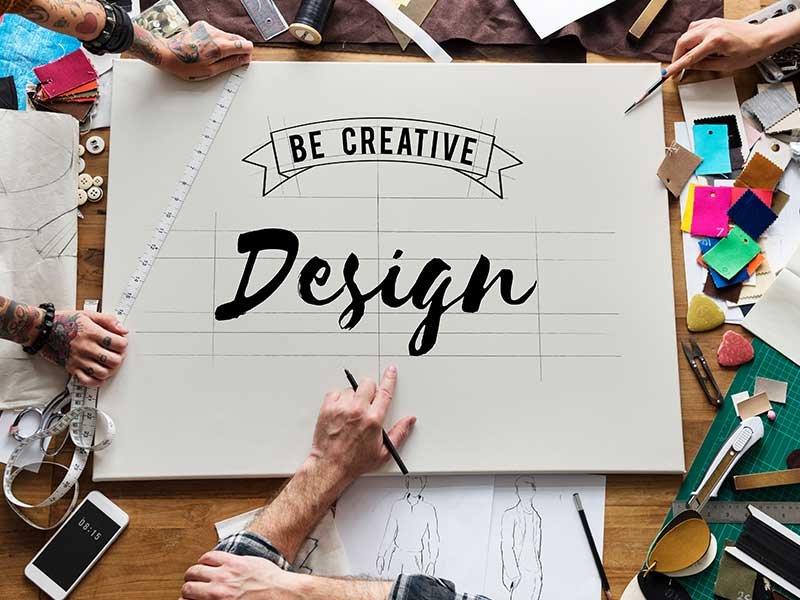What is a Good Logo? There are many misconceptions about that, people think that their logo should be pretty or people think the logo should say a lot about their brand or people think They should like it right away. But the truth is none of it is true.
According to The Legendary Designer Sagi Haviv, An effective logo needs, to be three things Appropriate, Distinctive & Memorable & Simple.
It needs to be appropriate, in Form concept. When we say appropriate that doesn’t mean expressive Because a logo can not say very much. In fact the less it says it would be the better, So what’s appropriate? appropriate is a rally personality thing, It’s a feeling So if it’s in sport maybe it’s Bold & Dynamic. if it’s in fashion Maybe it’s elegant. It’s a character, the character has to fit the business or the company or the organization that is represented.
This is maybe the hardest thing to figure out because you may think one thing is appropriate or the client might have a different definition of appropriateness.
The Three Criteria of a Good Logo
Appropriate
This can be described as finding & collecting information about the client & their aspirations, Their needs & their desire for what kind of portrayal, and what kind of image they would like to project, That is what we mean by appropriate.
Distinctive & Memorable
Simple
An uncomplicated form. This means that the shape of the logo doesn’t have any irrelevant details, or doesn’t have decorations & does not contain any kind of illustration, It’s a simple mark, it’s a basic graphic & that’s why our pursuit is all about reducing the details, Taking out unnecessary elements taking out details taking out decorations & staying with everything necessary for the mark to be Strong, Bold & Distinctive.
So that process will leave a mark that we can apply to small sizes like in business cards to large three-dimensional signboards to pixel platforms anywhere that the logo has to appear. The simplicity will ensure that it will be seen consistently everywhere it appears.
Example of a Good Logo
A good example of a logo that is very simple, distinctive & appropriate for the brand, It has worked over time is the Yellow Frame of The National Geographic.
If you landed here from Mars yesterday, You know nothing about National Geographic you would say what the heck is this? This is just a yellow rectangle. It is nothing. but in fact, in combination with the name and through consistent use over time it has become the perfect vessel for all the association & the feelings that the people have with National Geographic. Why, because it’s appropriate & the idea is right. First of all, it comes from the magazine so it used to be the frame of the magazine. But it can be a picture frame or a window or a door to new learning new experiences & new visions. So all of that feels appropriate to the idea.

It is distinctive because the color yellow makes us remember it. So it is very easy to close your eyes & imagine the mark & off-course, maybe it’s the most simple mark in the world, It is just a yellow box. When you see this mark you think about TV shows & programs, Magazines, but it’s very important to know that none of them are actually are in the logo.
We are not trying to make a picture of what the business does or what it offers. We are trying to Identify the brand strongly & clearly & we are not trying to promote the business or the company or the institutions through the logo & that is a very important distinction between promotion & identification when we see this logo for National Geographic we think about all these images & promotion. We have seen this in the past when we see the logo of the apple which is very simple.
It Doesn’t says anything about the brand. We think about their promotional efforts. Same thing about Coca-Cola & same thing for the very simple swoosh of Nike. We think about their spokesperson & all the athletes that they sponsored. But it’s very important to know that none of these images are in the logos. Apple if you see it and you didn’t know anything about Apple, what does it say about the product, They don’t sell apples.
Logo is meant for the Identification not for Promotion
This is a very important thing to remember we’re not trying to promote the product of the company through the logo in fact, when people try to emphasize promotion in a logo it will suffer because we make it too complicated or say too much. We want to create an effective identification for the brand, promotion is for a different time.
In essence, we think of the logo as the flag. It doesn’t say very much about the country. It represents, It says nothing. But it’s strong, it is bold & it’s distinctive. Using it over so many years consistently it has become a perfect vessel that holds all the associations and the feelings we have with that country.
So we understood the three basic criteria about the logo but, there is one more thing & the thing is that secret sauce is something that brings a kind of magic to the Logo mark & this could be many different things. It could be a special relationship between bold generic shape & delicate serif typography this could be something that is especially distinctive & original maybe a Vibrant color combination there are many ways to achieve that magic.
The Secret Sauce of a good Logo
One example of it is the logo design of the US Open Tennis Championships which goes to originality. The US Open is the most watched sporting event in the world, It is every year in August held in new york. It’s the fourth grand slam so there are four major events in tennis & After Australian Open, French Open, and Wimbledon comes the Us Open. For 20 year’s they had this logo that featured a Flaming Tennis Ball.
The problem with that is they couldn’t use it consistently & it wasn’t working in digital format because it was a complex image, It was a rigid image the relationship between the type & the symbol could not be changed. So they could not use it, on the small size because it had a certain rigid relationship with the logotype.
After conducting a little research the Designers found that, What did people think about when they hear the word US Open? Only 42% of people said tennis which was a good thing, but 42 % of the people said golf & the rest of the people were just confused.
After deciding that the logo needs to have a reference for the tennis, the designer’s next challenge was, whether they should keep the old tennis ball as a symbol or not. They want to keep the equity of that mark because already people recognize it very much. So they decided to change it a little bit.
They conducted another research on, Either they should preserve the Flaming ball in the logo or not & When the results comes up, the most recognizable logo was the Olympic rings & the US open Tennis ball design was only recognized by 9% of people. Also after interviewing several people in the organization about the new mark designers found that some people gave brand attributes like Energetic, Electric, Passionate, Movement, Excitement & even Explosion & all these words are appropriate for a Flaming Tennis Ball Logo design.
The other reason is that, when brands redesign their logos, The logo becomes simpler, modern, more symbolic & less illustrative with keeping the core idea of the logo. So it would be a good choice if they can keep the same idea with an evolved logo mark.
The Last reason to keep the flaming ball in the logo mark is when they look at the other major brand slams like Wimbledon, French Open & the Australia Open, each one of them has an element of the game tennis. So it would be good to keep the Flaming ball in the Logo.
So designers started sketching the concept for the logo & The mark that had been used for 20 years as an illustration of a flaming ball paired with thin serif type and a red swoosh was a complex image that had challenges in digital media and did not convey the tournament well as a premium sporting & entertainment brand. There were also several versions of the mark, which made it challenging to build recognition.
While the new version of the mark solved these challenges, the core concept of a flaming tennis ball still captures many of the brand attributes of the U.S. Open which are energy, excitement, and movement. That’s why it’s crucial when we redesign the logo the new design should look distinctive. It has to be new. It has to be original.

General FAQ's
How does brand identity design differentiate a brand from its competitors?
Brand identity design helps to establish a unique brand identity that sets a company apart from its competitors. This differentiation can be achieved through the use of unique typography, color palettes, and other visual elements.
